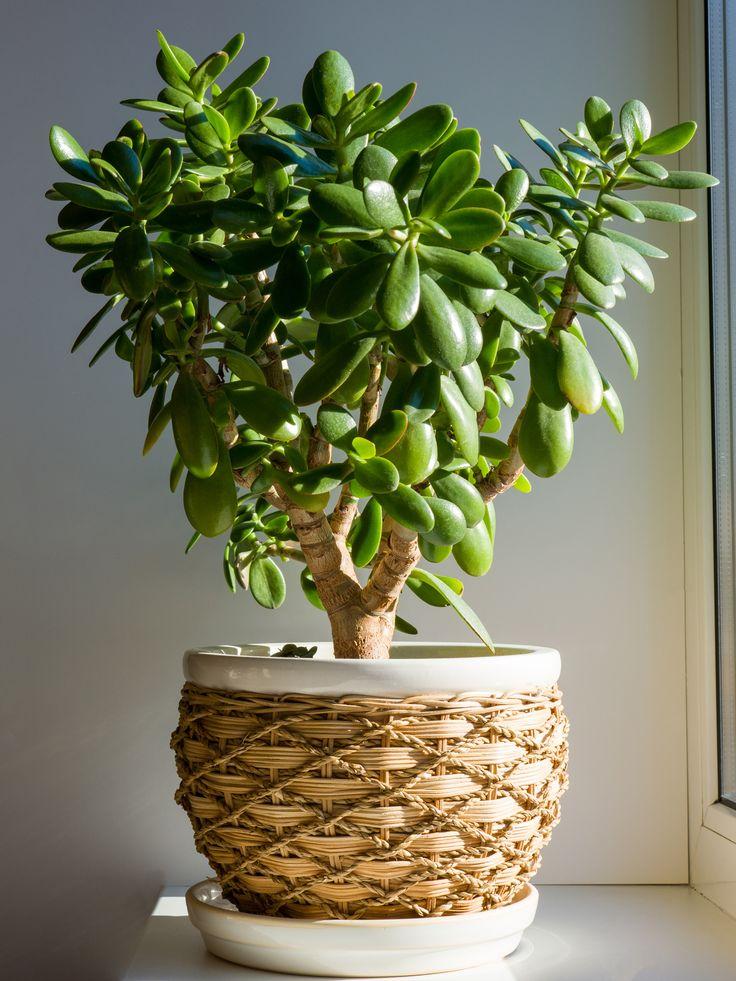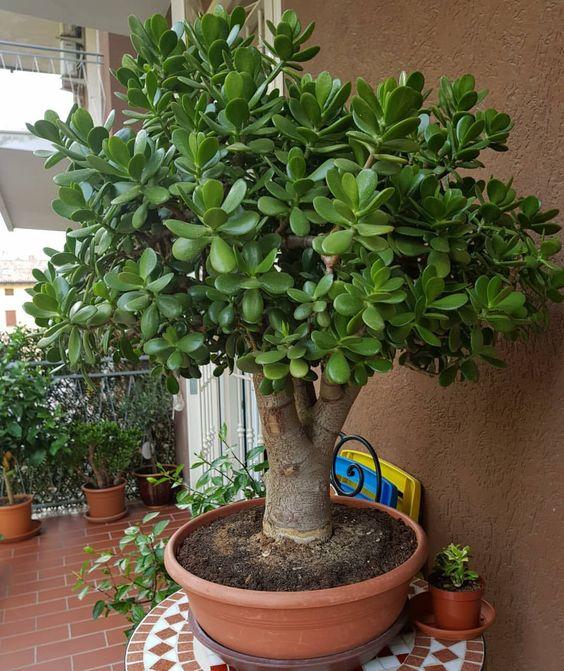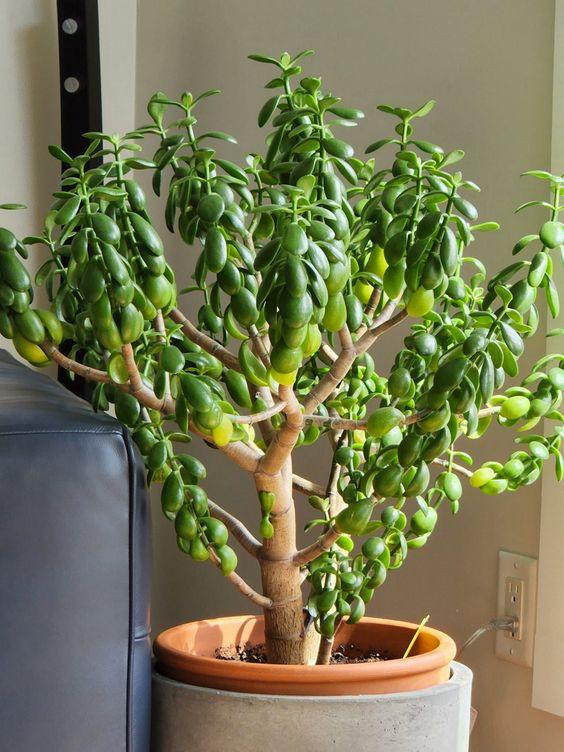



Table of Contents
- Introduction
- Types of Jade Plants Available in India
- Benefits of Jade Plant According to Vastu and Feng Shui
- Benefits of Jade Plant in Home
- Care Tips for Jade Plants
- Watering Guidelines
- Soil Requirements
- Fertilization
- How to Propagate Jade Plants
- Pruning
- Common Issues
- Conclusion
- Faq's
Introduction
The jade plant, scientifically known as Crassula ovata, is a succulent native to South Africa and Mozambique. Characterized by its thick, oval-shaped leaves and sturdy stems, this perennial plant can grow between 3 to 6 feet tall indoors.
Often referred to as the "money plant," "friendship tree," or "lucky plant," it is popular for its aesthetic appeal and low maintenance requirements. Jade plants are known to store water in their leaves, making them drought-resistant and ideal for indoor environments
Types of Jade Plants Available in India
While there are over 40 recognised varieties of jade plants, several types are particularly popular in India:

Common Jade (Crassula ovata): The most recognized type, known for its ease of care and ability to bloom small white flowers in spring.
Blue Bird Jade (Crassula ovata 'Blue Bird'): Features thick branches and blooms with pink and white flowers in early spring.
Gollum Jade (Crassula ovata 'Gollum'): Named after the character from The Lord of the Rings, it has tubular leaves with red-tipped edges.
Silver Dollar Jade (Crassula arborescens): Known for its blue-grey leaves that have a red tint, this variety can grow up to 4 feet tall.
Harbour Lights (Crassula ovata 'Harbour Lights'): Recognized for its thick leaves and minimal water requirements.
Lady Fingers Jade (Crassula ovata 'Lady Fingers'): Features tubular leaves that can also be propagated easily.
These varieties are often chosen for their unique appearances and adaptability to indoor conditions.
Benefits of Jade Plant According to Vastu and Feng Shui
Vastu Shastra
In Vastu Shastra, jade plants are considered auspicious. They are believed to attract positive energy and prosperity when placed in the southeast corner of a home or office. This position is associated with wealth and abundance, making the jade plant a popular choice for those seeking financial growth.
Feng Shui
In Feng Shui, jade plants symbolise good luck, prosperity, and wealth. They are thought to enhance the flow of positive energy (Chi) within a space. Placing a jade plant near the entrance of a home or office is believed to invite good fortune and create a welcoming atmosphere.
Benefits of Jade Plant in Home
Jade plants offer numerous benefits beyond their aesthetic appeal, making them a valuable addition to any home. One significant advantage is their ability to purify indoor air. Like many succulents, jade plants absorb toxins such as formaldehyde and benzene while releasing oxygen during photosynthesis. This natural air purification process contributes to improved indoor air quality, promoting a healthier living environment.
Additionally, jade plants are incredibly low-maintenance compared to other houseplants. Their drought-resistant nature means they can survive periods without water, making them ideal for busy individuals or those new to gardening. This resilience allows them to thrive even with minimal care.
Aesthetically, jade plants add greenery and vibrancy to indoor spaces. Their thick stems and glossy leaves create an appealing visual contrast against walls or furniture. Furthermore, they hold cultural significance as symbols of prosperity; gifting a jade plant is often seen as wishing someone good luck or success in business endeavors.

Lastly, with proper care, jade plants can live for decades and sometimes even generations, making them cherished family heirlooms that carry sentimental value over time.
Care Tips for Jade Plants
Caring for jade plants involves understanding their specific needs regarding light, water, soil, temperature, humidity, and fertilisation. First and foremost, these succulents thrive in bright but indirect sunlight; placing them near south-facing windows ensures they receive at least six hours of light daily without getting scorched by direct rays.
Watering is another crucial aspect of care; it's essential to follow the "less is more" philosophy. During spring and summer, when the plant actively grows, water when the top inch of soil feels dry but avoid letting it sit in soggy soil. In fall and winter, reduce watering frequency significantly as the plant enters dormancy.
Choosing the right soil is vital; opt for well-draining succulent potting mixes or create your own using sand and perlite mixed with organic matter like peat moss.
Temperature-wise, jade plants prefer environments between 65°F (18°C) and 75°F (24°C) but can tolerate cooler conditions down to 50°F (10°C).
Fertilization should be done sparingly using a balanced fertilizer during the growing season at half strength every few weeks will suffice. Finally, regular pruning helps maintain shape while promoting healthy growth; trimming back one-third of the height during active growth periods encourages bushier foliage.
Light Requirements
Jade plants thrive in bright, indirect sunlight. Ideally, they should be placed in a south-facing or west-facing window where they can receive at least six hours of light daily. While young plants can start with minimal light to prevent leaf scorching, they should gradually be exposed to brighter conditions as they mature.
Watering Guidelines
Watering is perhaps the most critical aspect of jade plant care. The general rule is to underwater rather than overwater:
Spring and Summer: Water frequently when the top inch of soil feels dry. Aim for a slightly moist but not soggy soil.
Fall and Winter: Reduce watering to about once a month as the plant enters dormancy. Overwatering during this period can lead to root rot123.
To water effectively:
Water from the bottom by placing the pot in a saucer of water for a few minutes, then discard any excess.
Always ensure that the pot has drainage holes to prevent water accumulation
Soil Requirements
Jade plants prefer well-draining soil. A succulent potting mix is ideal, often composed of sand, peat moss, and organic matter. This type of soil allows for proper drainage while providing enough nutrients for growth. Avoid using large pots; instead, choose one that is just a few inches larger than the root ball.
Temperature and Humidity
Jade plants are adaptable but thrive best in temperatures between 65°F and 75°F (18°C to 24°C) during the day and can tolerate cooler temperatures at night (50°F to 55°F or 10°C to 13°C). They prefer lower humidity levels and do not require misting; they absorb moisture through their roots
Fertilization
During the growing season (spring and summer), jade plants can benefit from fertilization:
- Use a balanced fertilizer (20-20-20) every few weeks.
- Avoid fertilizing in winter when the plant is dormant.
How to Propagate Jade Plants
Propagation of jade plants is an easy process that can be accomplished through stem or leaf cuttings, ideal for expanding your collection or sharing with friends. To propagate through stem cuttings, select a healthy stem about 3-4 inches long from an established plant. Use clean scissors or pruning shears to make a clean cut just below a leaf node.
After cutting, allow the stem cutting to dry out for 1-2 days until a callus forms at the cut end; this helps prevent rot when planted. Once calloused, place the cutting into well-draining succulent soil without burying it deeply, just enough so it stands upright. Water lightly initially; keep the soil slightly moist until roots develop.
For leaf propagation, gently twist off a healthy leaf from the main plant while ensuring you have some stem attached if possible. Let it dry on a clean surface for several days until it forms a callus on the cut edge. Place it on top of well-draining soil without burying it; mist lightly until roots form after several weeks.
Both methods work best during spring or summer when jade plants are actively growing; patience is key as roots may take time to develop fully.
Pruning
Pruning is generally not necessary until the plant has matured. When pruning:
Trim only up to one-third of the plant's height.
Do this during active growth periods in spring or summer to minimize stress on the plant.
Common Issues
 Overwatered Jade Plant, Pinterest
Overwatered Jade Plant, Pinterest
Overwatering
- Signs include yellowing leaves and mushy roots. If you suspect overwatering:
- Inspect roots; trim away any rotten sections.
- Repot in fresh soil after removing excess moisture.
Underwatering
- If leaves shrivel or drop, increase watering frequency but ensure the soil dries out between sessions.
Pests
- Common pests include mealybugs and spider mites. These can be treated with alcohol swabs or insecticidal soap.
Leaf Discoloration
Red edges may indicate sufficient sunlight; however, if leaves turn black or develop spots, consider adjusting light exposure or improving air circulation
Conclusion
The jade plant stands out not only for its attractive appearance but also for its cultural significance and numerous benefits as an indoor plant. Its association with prosperity makes it highly valued in both Vastu Shastra and Feng Shui practices across various cultures. With several varieties available in India, each offering unique characteristics, there's likely a perfect fit for every home.
Caring for a jade plant requires minimal effort yet yields rewarding results: improved air quality, enhanced aesthetics, and long-lasting companionship as these resilient plants can thrive for decades with proper attention. Their low maintenance needs make them especially appealing for busy lifestyles or novice gardeners looking to introduce greenery into their spaces without overwhelming commitments.
Furthermore, propagating jade plants provides an opportunity for expansion while sharing good fortune with friends and family. Whether you're seeking financial luck or simply wish to beautify your surroundings with greenery, incorporating a jade plant into your home can bring joy and positive energy into your life. Feel free to ask if you need any further information.
explore further
Latest from Contemporary ideas
More from Innovations
Resources
Dwello, for every home buyer, is a way to go from 'I feel' to 'I know', at no extra cost.




